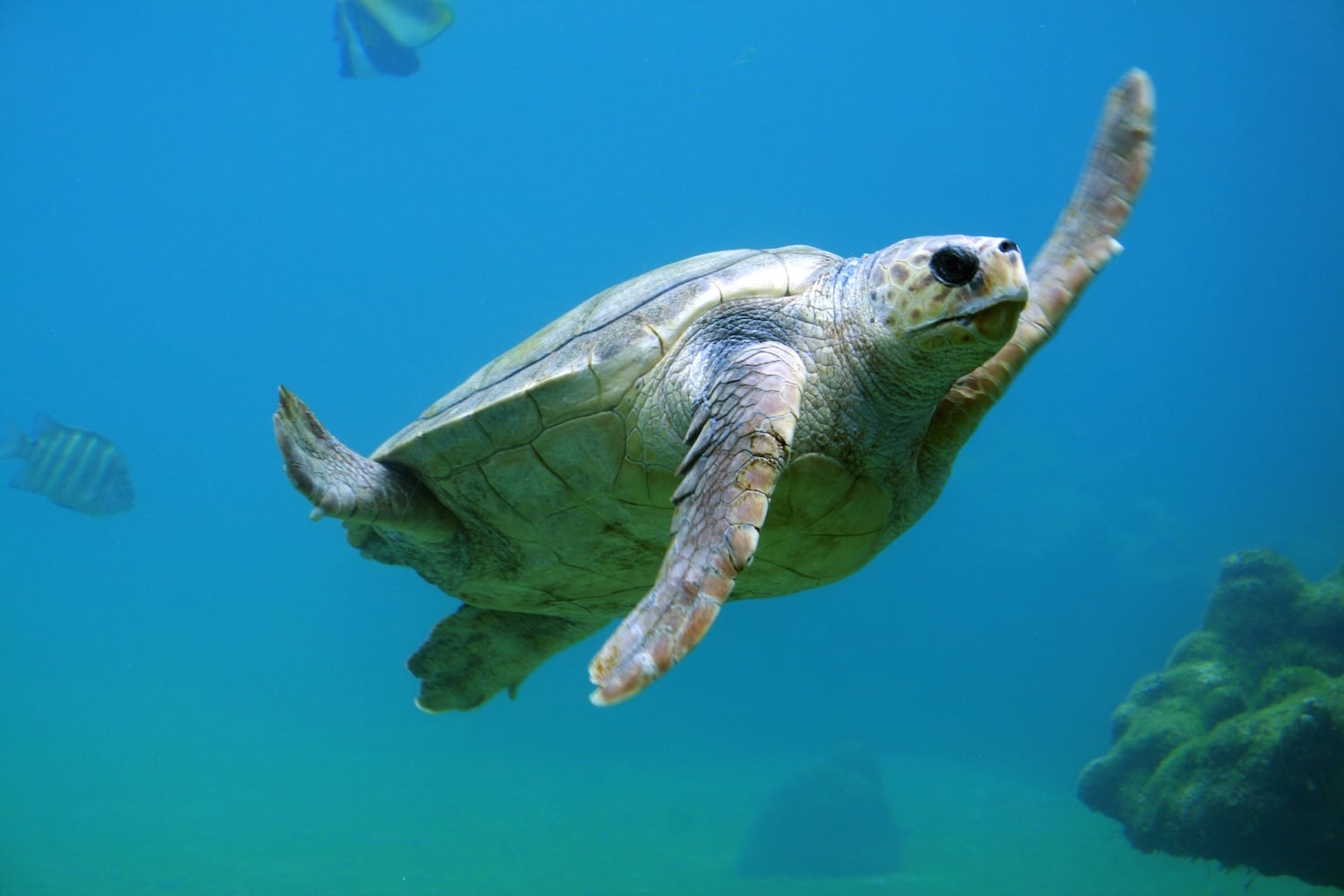In this article, you will learn about the importance of educating children about responsible turtle rearing at home. You will discover why it is crucial to teach children how to care for and provide a suitable environment for turtles. By the end, you will have a better understanding of how to educate your children on being responsible caretakers for their pet turtles.
Children have a natural curiosity and love for animals, and turtles can make wonderful pets for them to learn about responsibility and empathy. By teaching your children how to properly care for turtles at home, you are instilling important life lessons about the value of compassion and respect for all living creatures. Through this educational process, children can learn the importance of maintaining a clean and safe habitat for their turtles, providing them with appropriate nutrition, and ensuring their overall well-being. By educating your children about responsible turtle rearing at home, you are not only helping them develop important life skills but also fostering a sense of empathy towards animals.
The Importance of Educating Children about Responsible Turtle Rearing at Home
Turtles are fascinating creatures that captivate both children and adults alike. Their unique characteristics and behaviors make them an ideal pet for many families. However, it is crucial to educate children about responsible turtle rearing to ensure the well-being of these creatures and their impact on ecosystems. By teaching children about the proper care, conservation, and ethical considerations of turtle ownership, we can empower them to become stewards of nature and promote sustainability.
Understanding the Impact of Turtle Rearing on Ecosystems
Before delving into the specifics of turtle rearing, it is important to understand the impact that this activity can have on ecosystems. Turtles play a significant role in maintaining the balance of their habitats. They contribute to the health of aquatic environments by controlling populations of algae, insects, and other organisms. Additionally, turtles help with seed dispersal and can even modify the structure of wetland areas.
When turtles are reared at home, it is crucial to ensure that their needs are properly met. This includes providing a suitable habitat, proper nutrition, and adequate care. By educating children on the importance of providing a balanced and sustainable environment for their pet turtles, we can help preserve the delicate ecosystems that these creatures call home.
Promoting Conservation and Sustainability through Education
One of the most significant benefits of educating children about responsible turtle rearing is the promotion of conservation and sustainability. By teaching children about the threats faced by turtles in the wild, such as habitat loss, pollution, and illegal wildlife trade, we can instill in them a sense of responsibility and the desire to protect these amazing creatures.
Through educational programs and discussions, children can learn about the detrimental effects of plastic pollution and the impact it has on turtle habitats. Encouraging them to take action, such as participating in beach clean-ups or reducing their own plastic consumption, empowers them to make a positive difference in the environment.
Empowering Children as Stewards of Nature
By educating children about responsible turtle rearing, we empower them to become stewards of nature. Teaching them about the natural behaviors and adaptations of turtles allows them to develop a deeper understanding and appreciation for these creatures. Children can learn about the life cycle of turtles, from hatchlings to adult turtles, and explore concepts such as nesting and migration.
Understanding the importance of nesting habitats and the challenges that turtles face during their journey can foster empathy and compassion in children. By teaching them about the vulnerabilities of these creatures, we instill a sense of responsibility to protect and preserve their habitats. With this knowledge, children can take actions such as building nest boxes or participating in turtle conservation projects to contribute to the well-being of turtle populations.
The Basics of Turtle Rearing
Now that we understand the importance of educating children about responsible turtle rearing, let’s explore the basics of turtle care. This knowledge will equip them with the necessary skills to provide optimal care for their pet turtles.
Choosing the Right Species for Home Turtle Rearing
When considering turtle rearing, it is important to choose a species that is suitable for a home environment. Different species have varying care requirements, including tank size, temperature, and dietary needs. Researching and selecting a species that fits your family’s lifestyle and ability to provide appropriate care is crucial.
It is important to note that some turtles can live for several decades, so choosing a species that you can commit to caring for throughout its lifespan is essential. This decision should be made together as a family, ensuring that everyone understands the long-term responsibilities and commitments involved.
Creating a Suitable Habitat for Pet Turtles
Properly establishing a suitable habitat is essential for the well-being of pet turtles. Turtles require an environment that closely mimics their natural habitat in order to thrive. This includes providing a spacious tank or enclosure with both land and water areas.
The tank should be equipped with appropriate heating and lighting systems to maintain optimal temperature and light levels. It is also important to include natural elements such as rocks, plants, and hiding spots to provide a sense of security for the turtles.
Maintaining the cleanliness of the habitat is crucial for the health of the turtles. Regular cleaning of the tank, filtration of water, and monitoring of water quality are necessary to prevent the buildup of harmful bacteria that can lead to illness.
Providing Proper Nutrition and Care for Healthy Turtles
A well-balanced and nutritious diet is essential for the health of pet turtles. Depending on the species, turtles may have specific dietary requirements. It is important to research and provide a diet that meets their nutritional needs.
Commercially available turtle diets can serve as a convenient option; however, it is also essential to include fresh foods such as leafy greens, vegetables, and occasionally proteins like insects or fish. Providing a varied diet helps ensure that turtles receive all the necessary nutrients for their growth and well-being.
Regular veterinary check-ups are also important to monitor the turtles’ health and to catch any potential issues early on. By teaching children the importance of regular veterinary care and demonstrating the necessary procedures for checking the turtles’ health, we instill a sense of responsibility for their well-being.
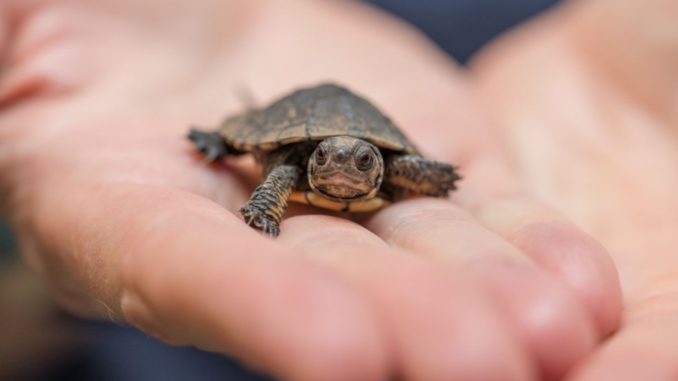
Teaching Children About Responsible Pet Ownership
When educating children about responsible turtle rearing, it is crucial to emphasize the responsibilities and commitments that come with owning a pet. This includes both the daily care tasks and the long-term commitment to the turtle’s well-being.
The Responsibilities and Commitments of Owning a Turtle
Owning a turtle requires a significant commitment of time, effort, and resources. Children need to understand that caring for a turtle is more than just feeding and observing it. Regular tank cleaning, maintaining appropriate environmental conditions, and addressing the turtle’s health needs are all responsibilities that must be taken seriously.
Educating children about the commitments involved in turtle ownership helps them to develop a sense of responsibility and accountability. This will ensure that they are fully aware of the effort required to properly care for a pet turtle.
Developing Compassion, Empathy, and Respect towards Animals
Responsible pet ownership goes beyond the physical care of the pet. It involves developing compassion, empathy, and respect towards animals. By teaching children to interact with their pet turtle in a gentle and respectful manner, we help them understand the importance of treating all living beings with kindness.
Children should be encouraged to observe and interact with turtles without causing them stress or harm. Teaching them to read the subtle signs of their turtle’s behavior can help foster a deep connection and understanding of these creatures.
Encouraging Responsibility through Daily Care Tasks
Incorporating daily care tasks into a child’s routine helps instill a sense of responsibility and accountability. These tasks may include feeding the turtle, checking the water temperature and quality, and maintaining the cleanliness of the tank. By involving children in these tasks, we teach them the importance of consistency and attentiveness in pet care.
Encouraging children to take ownership of these daily care tasks also helps to develop their confidence and independence. They will learn that their actions directly impact the well-being of their pet and understand the importance of prioritizing their responsibilities.
Understanding the Life Cycle of Turtles
To truly appreciate and care for turtles, it is essential to understand their life cycle. Teaching children about the natural progression from hatchling to adult turtle allows them to witness the growth and development of their pet turtles firsthand.
The Fascinating Journey from Hatchling to Adult Turtle
Turtles go through a fascinating journey of growth and development. From the moment they hatch from their eggs, they embark on a perilous journey to reach the safety of water. Educating children about this journey helps them understand the vulnerabilities that turtles face in their early stages of life.
As turtles grow and mature, they undergo physical changes and develop unique characteristics that allow them to adapt to their environment. Sharing this information with children instills a sense of awe and wonder, fostering a deeper connection and appreciation for these beautiful creatures.
Exploring the Natural Behaviors and Adaptations of Turtles
Turtles have developed a range of fascinating behaviors and adaptations that allow them to thrive in different environments. Exploring the natural behaviors of turtles, such as basking, swimming, and hunting, helps children understand their needs and preferences.
Understanding how turtles have evolved to survive in various habitats is not only educational but also promotes empathy and compassion towards these creatures. By appreciating their natural behaviors, children can learn to create an environment that best supports their pet turtle’s well-being.
Teaching Children about the Importance of Nesting and Migration
Nesting and migration are critical aspects of a turtle’s life cycle. By teaching children about these processes, we raise awareness about the importance of preserving nesting habitats and protecting migration routes.
Children can learn about the challenges that turtles face during nesting, such as finding suitable nesting sites and avoiding predators. Discussing the importance of preserving nesting beaches and avoiding disturbance during nesting season helps children understand their role in protecting turtle populations.
Migration is another fascinating aspect of a turtle’s life cycle. Educating children about the annual journeys that some turtles undertake enables them to understand the intricacies of their environment and appreciate the obstacles that turtles overcome during migration.
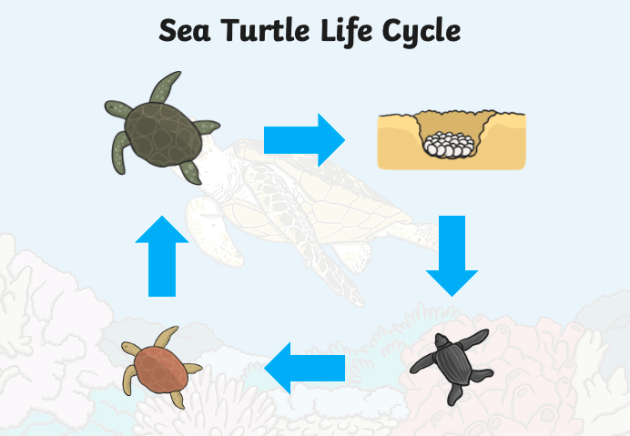
Promoting Environmental Awareness
Educating children about responsible turtle rearing goes beyond the care of the turtles themselves. It extends to raising awareness about environmental issues that affect turtles and their habitats.
Discussing the Threats Faced by Turtles in the Wild
Turtles face a range of threats in the wild that impact their survival. Habitat loss, pollution, climate change, and illegal wildlife trade are just a few examples. By discussing these threats with children, we can help them understand the urgency of protecting these amazing creatures.
Highlighting the direct and indirect consequences of human actions on turtle populations encourages children to consider the impact of their own behaviors. By teaching them simple actions they can take, such as reducing plastic waste or conserving water, we empower children to make a positive impact on the environment.
Addressing Plastic Pollution and Its Impact on Turtle Habitats
Plastic pollution is one of the biggest threats to turtles and other marine life. Plastic waste in oceans and waterways poses a serious danger to turtles, as they can mistake plastic bags or other debris for food, leading to serious injury or death.
By discussing the impact of plastic pollution on turtles, children can be motivated to reduce their own use of single-use plastics and participate in community clean-up initiatives. Teaching them about the importance of recycling and the consequences of littering helps instill a sense of responsibility for the environment.
Empowering Children to Take Action in Protecting the Environment
Educating children about responsible turtle rearing is also an opportunity to empower them to take action in protecting the environment. By discussing environmental issues and teaching them about conservation efforts, children can become advocates for positive change.
Encouraging children to participate in conservation projects or engage in community initiatives helps them understand that their actions can make a significant difference. By promoting age-appropriate activities such as tree planting, habitat restoration, or joining local environmental organizations, children can actively contribute to the protection of turtles and their habitats.
Encouraging Ethical Practices in Turtle Rearing
In addition to the physical care and conservation considerations, teaching children about the legal and ethical aspects of turtle rearing is crucial. By educating them about these considerations, we instill a sense of responsibility and respect for the well-being of turtles.
Informing Children about Legal and Ethical Considerations
It is essential to inform children about the legal and ethical aspects of turtle rearing. Some species may be protected by laws, and it is important to abide by these regulations to ensure the conservation of wild populations.
Educating children about legal considerations empowers them to make responsible decisions, such as obtaining turtles from reputable sources and avoiding purchasing turtles that may have been illegally obtained. This knowledge helps prevent the support of illegal wildlife trade, which poses a significant threat to turtle populations worldwide.
Highlighting the Dangers of Illegal Wildlife Trade
Illegal wildlife trade is a significant issue that poses a direct threat to turtle populations. By discussing this issue with children, we can raise awareness about the exploitation of turtles and the consequences of supporting this trade.
Children should be informed that purchasing turtles or turtle products from unknown sources, such as online marketplaces or street vendors, can contribute to the illegal trade and ultimately harm turtle populations. By emphasizing the importance of ethical practices and supporting conservation efforts, we promote responsible turtle rearing and discourage the demand for illegally obtained turtles.
Promoting Adoption and Rescue of Turtles
Promoting the adoption and rescue of turtles is an ethical and responsible choice for families interested in turtle rearing. Educating children about the benefits of adopting turtles from shelters or rescue organizations helps them understand the importance of giving these animals a second chance.
By teaching children about the proper care of rescued turtles and the value of providing a loving and safe home, we instill a sense of compassion and empathy. Supporting rescue organizations also contributes to their vital work in rehabilitating and releasing turtles back into the wild.
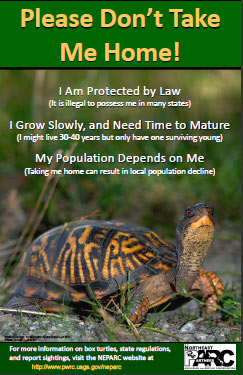
Fostering a Connection with Local Conservation Organizations
In addition to educating children within the confines of the home, fostering a connection with local conservation organizations can greatly enhance their understanding of responsible turtle rearing and environmental conservation.
Finding Suitable Conservation Groups or Sanctuaries
Finding local conservation groups or sanctuaries that focus on turtle conservation is a great way to involve children in hands-on learning experiences. These organizations often offer educational programs, guided tours, and volunteer opportunities that allow children to learn about turtles and contribute to their preservation.
Researching and visiting these organizations as a family can provide children with opportunities to witness turtle conservation efforts firsthand, interact with experts in the field, and gain a deeper understanding of the challenges faced by turtles in the wild.
Supporting Conservation Efforts through Volunteering or Donations
Supporting turtle conservation efforts as a family can be done through volunteering time or making donations to reputable organizations. Many conservation groups rely on the support of volunteers to carry out research, rescue, and rehabilitation initiatives.
Involving children in volunteer activities provides them with a hands-on experience and a tangible connection to the preservation of turtle populations. Donations, whether monetary or in-kind, help support the conservation work of these organizations and contribute to the long-term well-being of turtles.
Participating in Educational Programs and Events
Educational programs and events organized by local conservation organizations are excellent opportunities for children to deepen their knowledge of turtle rearing and environmental conservation. These programs often include workshops, presentations, and interactive activities that engage children and foster a love for nature.
Participating in these events not only enhances a child’s understanding of responsible turtle rearing, but also provides opportunities to meet like-minded individuals, share experiences, and learn from experts in the field. These connections can further support a child’s passion for turtles and their conservation.
Teaching Children about Proper Handling and Interaction
Children should be taught how to safely handle and interact with turtles to ensure the well-being of both the child and the turtle. Respecting the boundaries and sensitivities of turtles is essential to avoid causing stress or harm.
Demonstrating Safe Techniques for Handling Turtles
Children should be taught safe techniques for handling turtles to minimize stress and prevent injury. This includes approaching the turtle calmly and using proper hand placement to support its body.
Demonstrating and practicing these techniques with children ensures that they understand the importance of handling turtles gently and with care. By involving children in this process, we empower them to develop a positive and respectful relationship with their pet turtle.
Respecting the Boundaries and Sensitivities of Turtles
Turtles have their own sensitivities and preferences when it comes to interaction. Educating children about the behaviors and body language of turtles helps them understand when a turtle is stressed or uncomfortable.
Children should be taught to recognize signs of stress in turtles, such as recoiling into their shells or displaying aggression. Respecting these boundaries and allowing the turtles to retreat or rest when they desire promotes a safe and harmonious environment for both the child and the turtle.
Encouraging Observation and Enjoyment from a Distance
Observing and enjoying turtles from a distance is sometimes the best way to appreciate their natural behaviors. Children should be encouraged to quietly observe their pet turtles and appreciate them in their natural state.
By promoting this approach, children develop a sense of patience and respect for the privacy of the turtles. It also encourages them to engage in other forms of play and interaction with their pet turtles, such as visual arts or creative projects inspired by turtles.
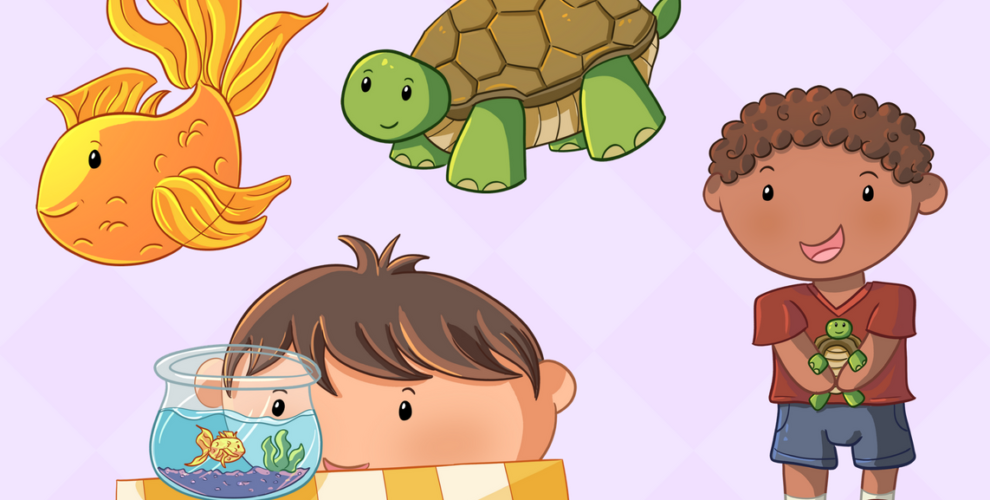
Educating Children on Health and Hygiene Practices
Aside from providing physical care for turtles, educating children on health and hygiene practices is important to ensure the well-being of both the turtles and the children themselves.
Teaching Proper Handwashing before and after Handling Turtles
Proper handwashing is crucial before and after handling turtles. Children should be taught to wash their hands thoroughly with soap and water to prevent the transmission of harmful bacteria.
By emphasizing the importance of handwashing, we instill a habit that promotes the health and well-being of both the child and the turtle. Regular handwashing reduces the risk of contamination and helps maintain a clean and hygienic environment for both the turtle and the family.
Maintaining Cleanliness in Turtle Enclosures
Maintaining cleanliness in turtle enclosures is an important aspect of pet care. Children should be involved in the regular cleaning and maintenance of the turtle’s habitat, ensuring that the environment remains healthy and hygienic.
This includes removing waste and uneaten food from the tank, replacing the water as necessary, and cleaning the tank and its accessories. By involving children in these tasks, we educate them about the importance of cleanliness and its direct impact on the health of the turtles.
Recognizing and Responding to Signs of Illness in Turtles
Recognizing signs of illness in turtles is an important skill for children to develop. By teaching them to observe changes in behavior, appetite, or appearance, we empower them to identify potential health issues in their pet turtles.
Children should be encouraged to notify their parents or guardians if they notice any signs of illness. Early intervention and veterinary care can greatly improve the chances of a full recovery for sick turtles. By recognizing the importance of regular veterinary check-ups and prompt action when necessary, children learn to prioritize the well-being of their pet turtles.
Integrating Turtle Rearing into Learning Opportunities
Turtle rearing provides numerous learning opportunities beyond the physical care of the turtles. By integrating turtle-related topics into various subject areas, children can explore and deepen their understanding of turtles in a holistic way.
Using Turtles as a Tool for Teaching Science, Biology, and Ecology
Turtles offer a rich opportunity to teach concepts in science, biology, and ecology. Children can learn about the different species of turtles, their habitats, and the unique adaptations that enable them to thrive in various environments.
Incorporating scientific experiments, observations, and research projects into lessons allows children to engage actively in their learning. This hands-on approach not only fosters a deeper understanding of turtle biology and behavior but also develops critical thinking and analytical skills.
Incorporating Art, Literature, and Creative Projects Inspired by Turtles
Art, literature, and creative projects inspired by turtles can enhance a child’s understanding and appreciation for these creatures. Integrating storytelling, art projects, and literature about turtles into the curriculum provides children with opportunities to express their creativity and imagination.
Children can create artwork depicting turtles, write stories or poems, or even compose songs inspired by turtles. This creative expression not only strengthens their connection with turtles but also allows them to explore different forms of artistic communication.
Encouraging Research and Independent Learning about Turtles
Encouraging children to conduct research and engage in independent learning about turtles fosters a sense of curiosity and self-driven exploration. Providing children with access to books, documentaries, and online resources about turtles allows them to further deepen their knowledge and develop their own interests within the subject.
Encouraging independent learning not only supports a child’s natural curiosity but also promotes skills such as research, critical thinking, and information literacy. By allowing children to take ownership of their learning, we empower them to become lifelong learners and advocates for turtle conservation.
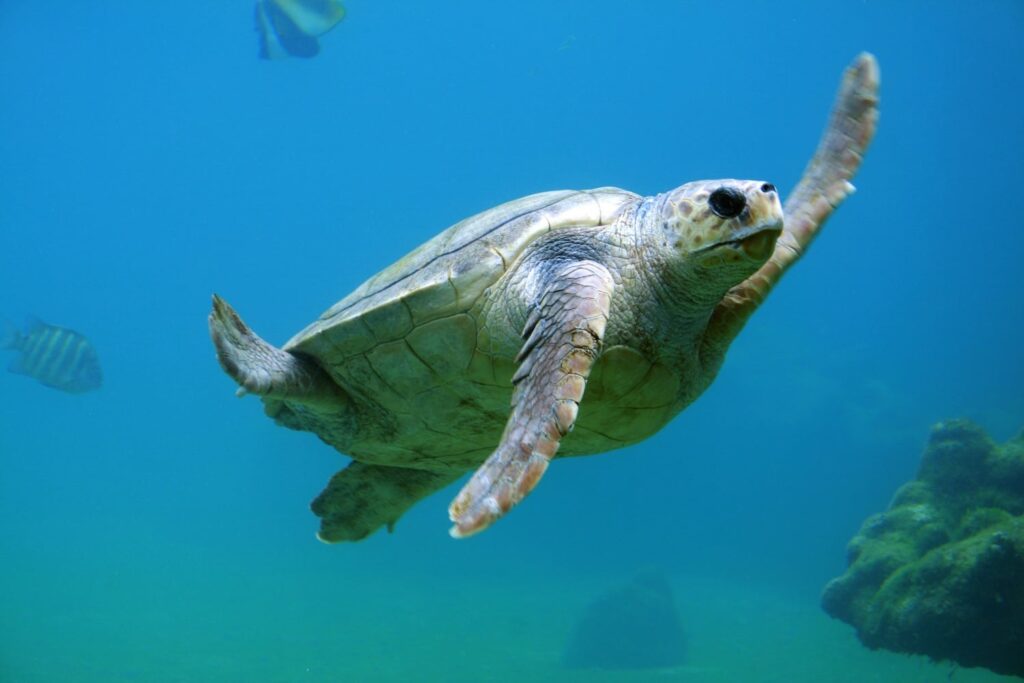
Creating a Supportive Community for Turtle Enthusiasts
Creating a supportive community for turtle enthusiasts is invaluable in nourishing a child’s passion for turtle rearing and conservation. By connecting with fellow turtle lovers and experts in the field, children gain access to a wealth of knowledge, advice, and shared experiences.
Joining Online Forums and Social Media Groups for Turtle Lovers
Online forums and social media groups dedicated to turtle enthusiasts provide platforms for sharing experiences, asking questions, and exchanging valuable information. These communities offer a supportive space for children to interact with like-minded individuals who share their love for turtles.
Supervised participation in these communities allows children to learn from experienced turtle keepers, gain insights into various turtle species, and expand their knowledge beyond what is learned at home or in school. It also encourages them to connect with a global network of turtle enthusiasts who share their passion for conservation.
Sharing Experiences, Tips, and Advice with Fellow Turtle Enthusiasts
Sharing experiences, tips, and advice with fellow turtle enthusiasts creates a robust support system for children. Whether it is navigating common challenges in turtle rearing, seeking advice on specific behaviors or health concerns, or simply sharing the joy of watching a turtle hatch, the camaraderie and support of the community is invaluable.
By encouraging children to actively participate in these communities, we foster their personal growth, confidence, and social skills. The connections made can lead to lifelong friendships and collaborative efforts in turtle conservation.
Building Connections with Experts and Mentors in Turtle Rearing
Building connections with experts and mentors in turtle rearing opens a world of learning opportunities for children. Local zoos, conservation centers, or universities often have experts who are willing to share their knowledge and expertise with young turtle enthusiasts.
Children can engage with these experts through workshops, mentorship programs, or internships. Learning directly from professionals in the field not only provides valuable insights and guidance but also inspires children to pursue their passion for turtle conservation and rearing.
Teaching Children About Balance and Responsibility
Educating children about responsible turtle rearing also involves teaching them about balance and responsibility. It is important for children to understand the bigger picture and consider the impact of their actions on both their pet turtle and the environment.
Discussing the Importance of Balancing Pet Ownership with Conservation
When educating children about responsible turtle rearing, it is essential to discuss the larger context of conservation and the balance between pet ownership and the well-being of wild turtle populations. Children should be made aware that their pet turtle is part of a broader effort to ensure the survival and flourishing of turtle species.
By discussing this balance, children can understand the importance of responsible ownership and the ethical considerations that come with it. This awareness encourages them to make informed decisions and consider the welfare of turtles and their habitats.
Ensuring Children Understand the Financial and Time Commitments of Turtle Rearing
Responsible turtle rearing involves financial and time commitments. It is important to ensure that children understand the costs associated with turtle care, such as proper equipment, veterinary expenses, and ongoing supplies.
Children should also understand the time commitment that comes with caring for a turtle. This includes daily care tasks, regular tank maintenance, and the long-term responsibility of providing care throughout the turtle’s lifespan.
By discussing these commitments with children, we prepare them for the realities of turtle rearing and help them develop a realistic understanding of the responsibilities involved.
Instilling the Values of Responsibility and Accountability for Their Actions
Educating children about responsible turtle rearing is an opportunity to instill values such as responsibility and accountability. By integrating these values into daily care tasks and discussions about conservation, children learn that their actions have consequences and that they are accountable for the well-being of their pet turtle and the environment.
Encouraging children to take ownership of their responsibilities and empowering them to make thoughtful choices fosters a sense of pride and personal growth. These values extend beyond turtle rearing and become guiding principles in their lives.
The Role of Parents and Guardians in Turtle Education
Parents and guardians play a vital role in fostering responsible turtle rearing and environmental education. By providing support, guidance, and supervision, they create an environment that promotes learning and growth.
Providing Support, Guidance, and Supervision in Turtle Rearing
Parents and guardians should provide support, guidance, and supervision in the care of pet turtles. This includes assisting younger children with daily care tasks, providing guidance on proper handling techniques, and ensuring the well-being of both the child and the turtle.
By actively participating in these activities, parents and guardians reinforce the importance and value of responsible turtle rearing. They also establish a strong foundation for open communication, where questions, concerns, and experiences can be shared, creating a sense of trust and support.
Leading by Example in Responsible Behavior towards Turtles
As role models, parents and guardians have the opportunity to lead by example in responsible behavior towards turtles. By demonstrating respect, empathy, and compassion in their interactions with turtles, they teach children the importance of treating animals with kindness and consideration.
Parents and guardians should also model responsible environmental practices, such as proper waste disposal, recycling, and reducing single-use plastics. These actions send a powerful message to children about the importance of taking care of the environment and the impact of individual behaviors.
Involving the Whole Family in Educational Activities
Educational activities related to turtle rearing should involve the whole family. This not only creates memorable experiences but also promotes a sense of shared responsibility and shared values.
Engaging in educational programs, visiting conservation organizations, and participating in community initiatives as a family fosters a sense of teamwork and unity. These collective efforts contribute to the child’s development as a responsible and compassionate individual while strengthening family bonds.
Conclusion
Educating children about responsible turtle rearing at home is crucial to ensure the well-being of both the pet turtles and the environment they inhabit. By promoting conservation, sustainability, and ethical practices, we empower children to become stewards of nature and contribute to the preservation of turtle populations.
Through understanding the impact of turtle rearing on ecosystems, teaching the basics of turtle care, and instilling the values of responsibility and accountability, children learn to appreciate and care for these amazing creatures. By integrating turtle rearing into learning opportunities and fostering a supportive community, we encourage children to explore their passion for turtles and develop a lifelong appreciation for nature.
Educating children about responsible turtle rearing goes beyond the scope of a single article. It is an ongoing process that requires continuous learning, adaptation, and a sense of wonder. By nurturing this journey, we can inspire the next generation to be guardians of turtles and the wider natural world.
